대한민국 관광역사공원
Korea Tourism History Park
In 1971, the Korean government initiated the Gyeongju Tourism Comprehensive Development Plan,
leading to the opening of the Bomun Tourist Complex on April 6, 1979.
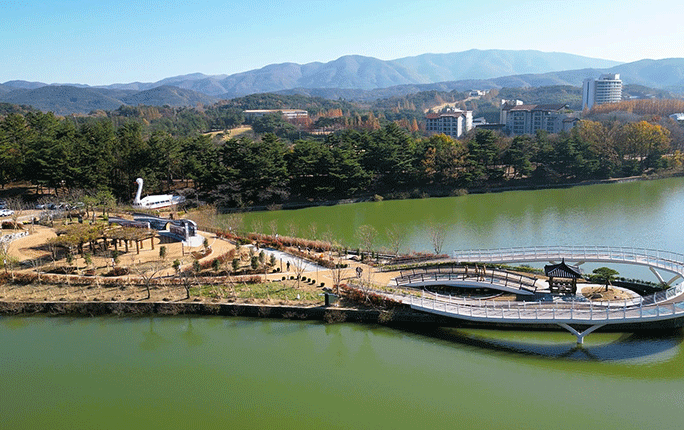
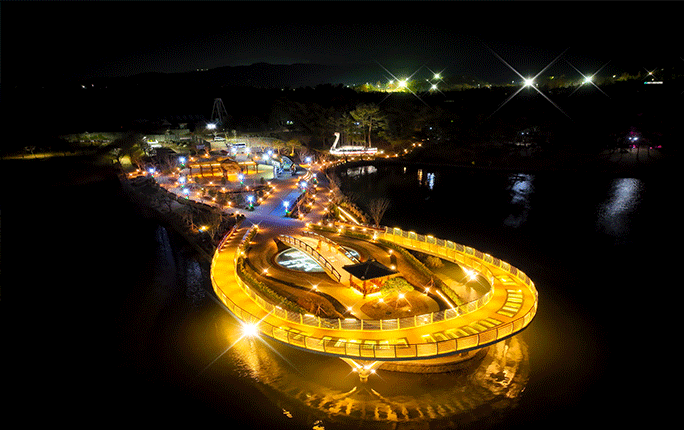
Memorial Tree and Fountain Monument in Bomun Lake
The Memorial Tree and Fountain Monument was established on September 11, 1998, to commemorate the activation of the Bomun Lake Fountain,
which was created for the Gyeongju World Culture Expo.
Former President Kim Dae-jung planted a tree and erected a monument in the garden of the Gyeongsangbuk-do Culture and Tourism Organization headquarters.
To enhance its significance, the monument was relocated to the Korea Tourism History Park. (The original tree did not survive.)*
The Bomun Lake Fountain featured one central fountain (reaching up to 100 meters) and six surrounding fountains (reaching up to 30 meters),
symbolizing the six villages of the Silla era. Its lotus flower-inspired display created a stunning spectacle.
Since 2019, the fountain has been out of operation due to aging infrastructure.
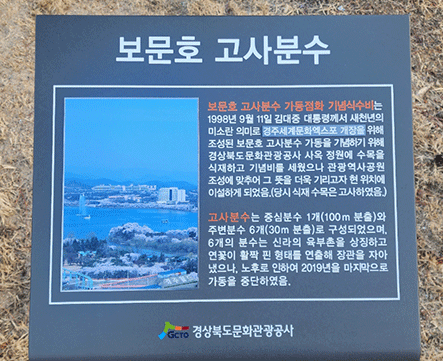
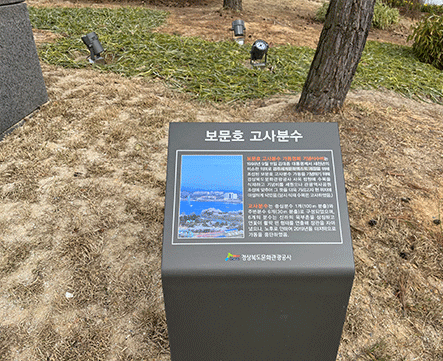
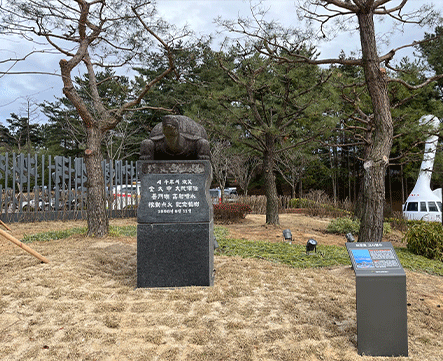
Swan Lake Cruise Ship
Specifications: Length 16m, Width 4.5m, Height 11m
Capacity: 62 passengers, Operational Period: 1979–2014
The Swan Lake Cruise Ship, which sailed across Bomun Lake since the opening of the Bomun Tourist Complex in 1979, was retired due to aging.
To commemorate its role as a cornerstone of tourism in the Bomun Tourist Complex, it was relocated and restored at its current location.
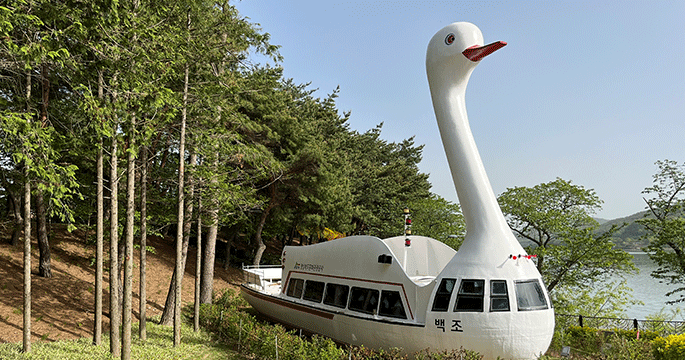
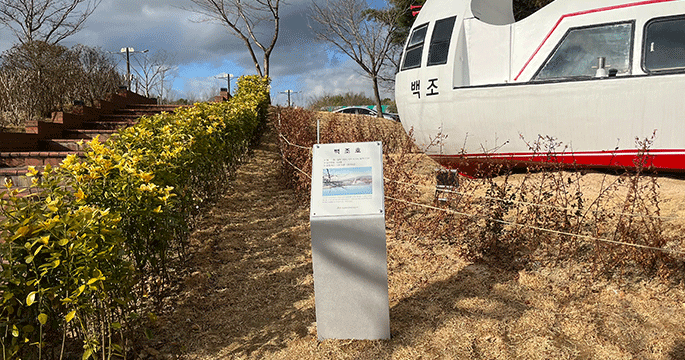

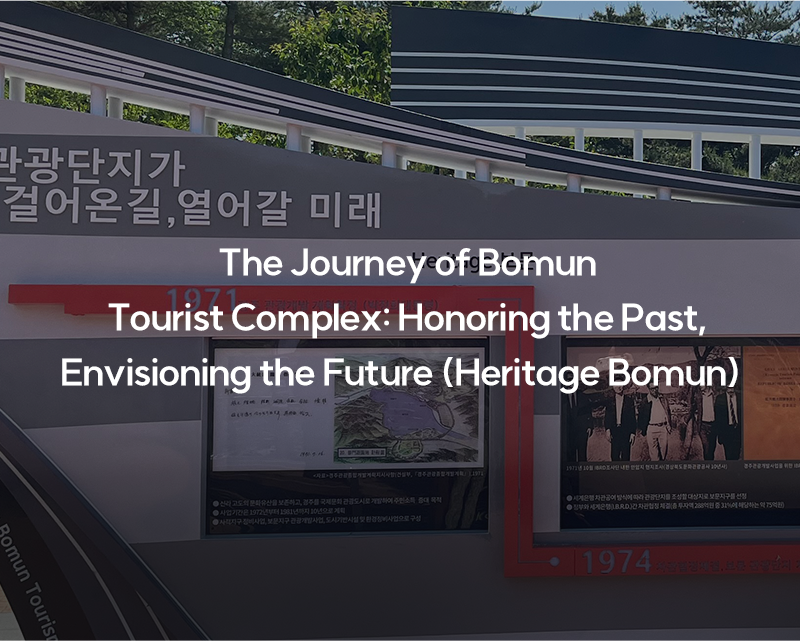
History Wall 1
1971: Gyeongju Tourism Development Plan finalized
(under the leadership of the late President Park Chung-hee)
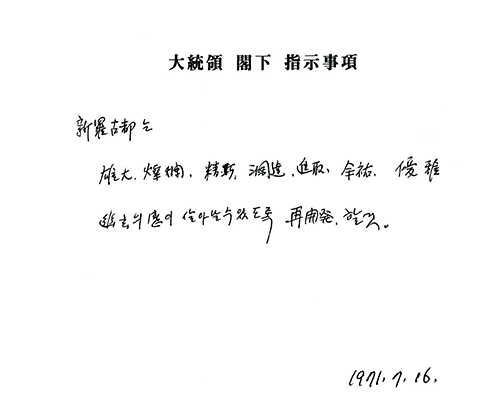
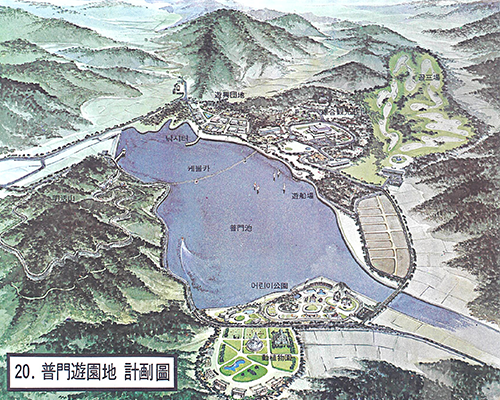 Directions for the development were outlined in the 1971 publication of "Gyeongju Tourism Comprehensive Development Plan" by the Ministry of Construction.
Directions for the development were outlined in the 1971 publication of "Gyeongju Tourism Comprehensive Development Plan" by the Ministry of Construction.
(under the leadership of the late President Park Chung-hee)
- The Gyeongju Tourism Development Plan aimed to preserve the cultural heritage of the ancient Silla capital and transform
Gyeongju into an international cultural tourism city, boosting local income. - The project spanned a 10-year period (1972–1981) and encompassed the restoration of historical sites, the development of the Bomun District for tourism,
and urban infrastructure and environmental improvements.


1974: Loan Agreement Signed, Bomun Tourist Complex Designated
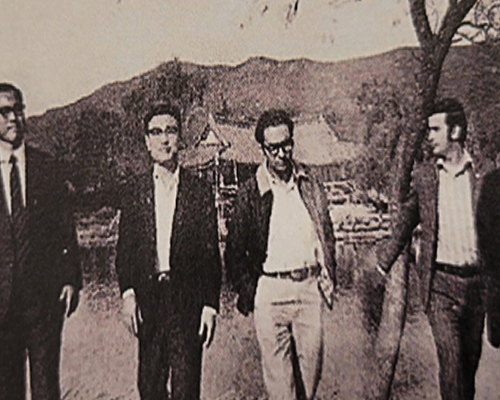 <1> In October 1971, an International Bank for Reconstruction and Development (IBRD) survey team conducted an on-site inspection at Anapji for the Gyeongju Tourism Development Project, leading to the loan agreement.
<1> In October 1971, an International Bank for Reconstruction and Development (IBRD) survey team conducted an on-site inspection at Anapji for the Gyeongju Tourism Development Project, leading to the loan agreement.
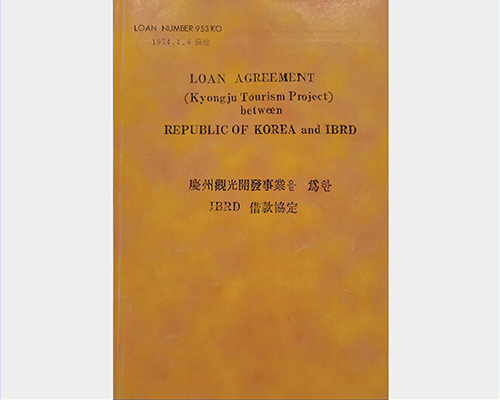 In October 1971, an International Bank for Reconstruction and Development (IBRD) survey team conducted an on-site inspection at Anapji for the Gyeongju Tourism Development Project, leading to the loan agreement.
In October 1971, an International Bank for Reconstruction and Development (IBRD) survey team conducted an on-site inspection at Anapji for the Gyeongju Tourism Development Project, leading to the loan agreement.
- Bomun District was selected for tourism development through a World Bank loan arrangement,
culminating in a loan agreement between the Korean government and the World Bank.
(Of the total investment of 28.8 billion KRW, approximately 7.5 billion KRW—31%—was financed through loans.) - Enactment of the Tourism Complex Development Promotion Act.


1975: Bomun Tourist Complex Designated,
Establishment of Gyeongsangbuk-do Culture and Tourism Organization
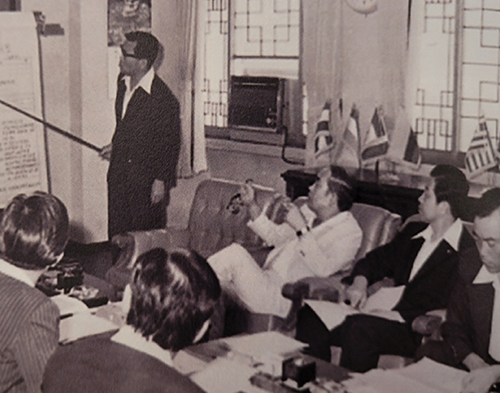 <1> In 1975, the inaugural shareholders' meeting of
<1> In 1975, the inaugural shareholders' meeting of
the Gyeongsangbuk-do Culture and Tourism Organization took place.
Establishment of Gyeongsangbuk-do Culture and Tourism Organization
- In accordance with the loan agreement, the Gyeongsangbuk-do Culture and Tourism Organization was established as the primary entity for developing the Bomun Tourist Complex.
- The organization was responsible for the efficient management and operation of the Bomun Tourist Complex, as well as the repayment of the loan.

the Gyeongsangbuk-do Culture and Tourism Organization took place.
1977: Initial Development Period (1977–1979)
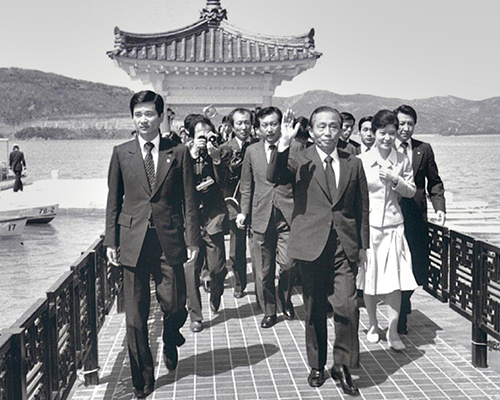 The late President Park Chung-hee inspected
The late President Park Chung-hee inspected
the construction site of the Bomun Tourist Complex.
- Established an investment attraction framework and secured investments for hotels and condominiums.
- Took over and managed a tree nursery, initiated golf course construction, and streamlined operations.
- First private investment contracts: Gyeongju Chosun Hotel and Gyeongju Tokyu Hotel.

the construction site of the Bomun Tourist Complex.
1979: Opening of the Bomun Tourist Complex
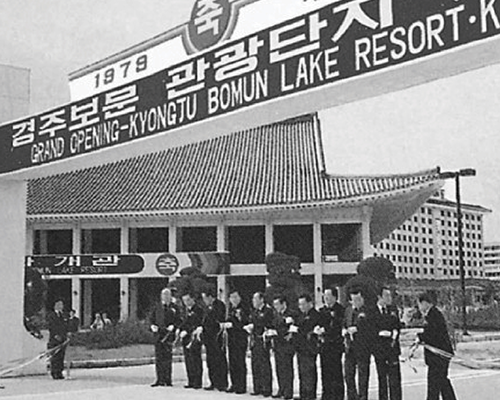 <1>Held the 1979 grand opening ceremony for the Bomun Tourist Complex.
<1>Held the 1979 grand opening ceremony for the Bomun Tourist Complex.
- Completed 60% of the area’s development during Phase 1.
- Phase 1 concluded with the grand opening of the Bomun Tourist Complex on April 6, 1979.
- Opened the Gyeongju Chosun Hotel and Gyeongju Tokyu Hotel.
- Constructed key facilities: symbolic tower, row-style commercial buildings, entertainment facilities,
outdoor theater, lakeside facilities, headquarters of the Gyeongsangbuk-do Culture and Tourism Organization, and a tourism center.

History Wall 2
1979–1985: Development as a National Tourism Resort
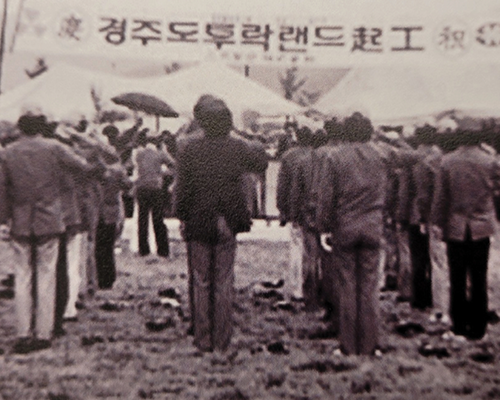 Groundbreaking ceremony for Dotorak World in September 1983.
Groundbreaking ceremony for Dotorak World in September 1983.
- In 1981, Korea Condo opened, providing facilities tailored for family tourists.
- n May 1985, Dotorak World opened, offering sports facilities, amusement attractions, a swimming pool, a bungalow town, and various ancillary facilities.

1986–1993: Designation as a Hot Spring District
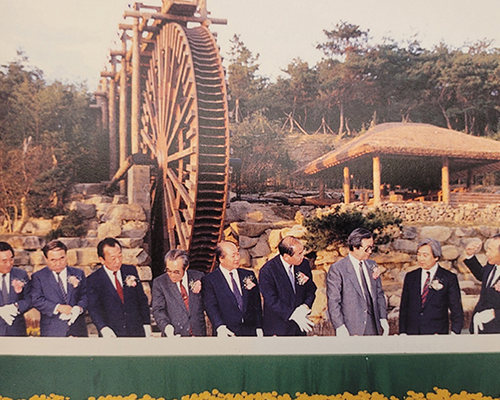 In August 1988, a traditional watermill was completed.
In August 1988, a traditional watermill was completed.
- In 1991, Bomun District was designated as a hot spring zone, establishing it as a year-round tourist destination.

1994: Designation as a Tourism Promotion Zone
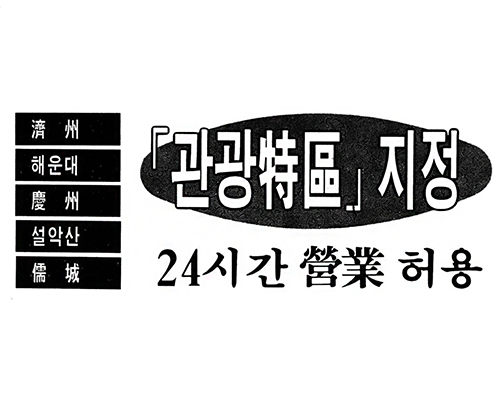 Allowed 24-hour operations in the Gyeongju Tourism Promotion Zone. (August 28, 1994, Maeil Business Newspaper)
Allowed 24-hour operations in the Gyeongju Tourism Promotion Zone. (August 28, 1994, Maeil Business Newspaper)
- Designated as a tourism promotion zone to attract international tourists.

2015: Recognized as a “Korea Tourism Star”
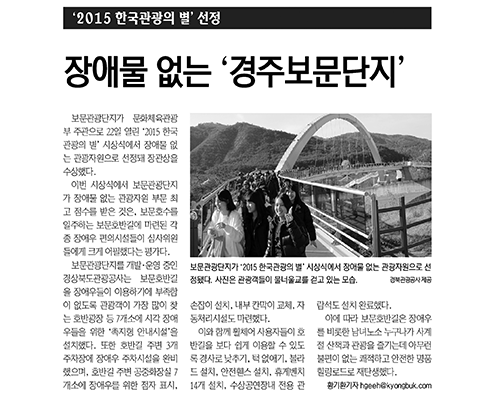 <1> December 23, 2015, Gyeongbuk Ilbo.
<1> December 23, 2015, Gyeongbuk Ilbo.
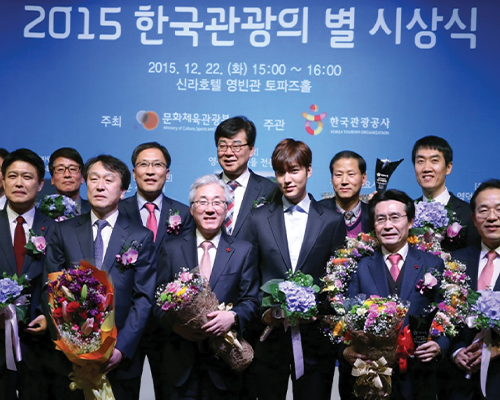 <2> 2015 Korea Tourism Star Awards Ceremony
<2> 2015 Korea Tourism Star Awards Ceremony
(Korea Policy Briefing).
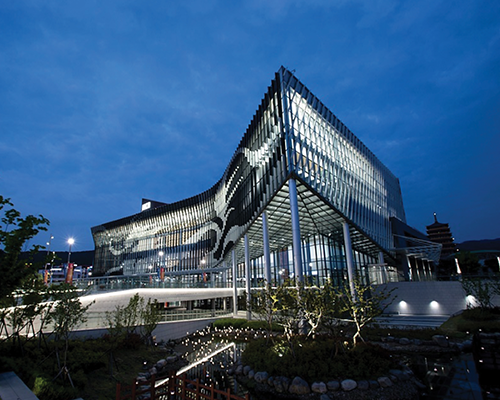 Gyeongju Hwabaek International Convention Center (HICO)
Gyeongju Hwabaek International Convention Center (HICO)
- The Bomun Tourist Complex was selected as a “Korea Tourism Star” and designated as Korea’s first Barrier-Free Tourism Site.
- Achieved 3.35 million lodging tourists and welcomed over 55,000 Chinese-speaking visitors.
- Opened the Gyeongju Hwabaek International Convention Center (HICO).


(Korea Policy Briefing).

2016–2020: Development and Revitalization Efforts
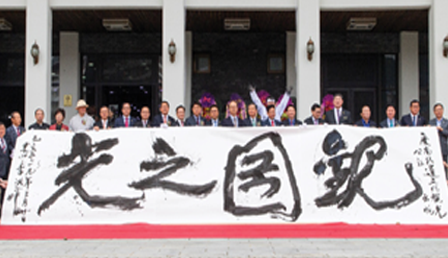 Held a vision declaration ceremony for the launch of the Gyeongsangbuk-do
Held a vision declaration ceremony for the launch of the Gyeongsangbuk-do
Culture and Tourism Organization
(Gyeongbuk Provincial Council website).
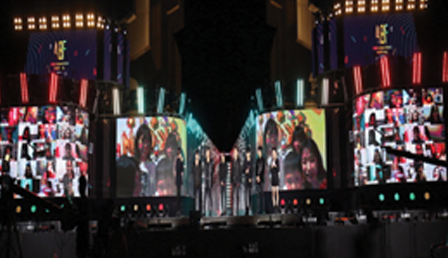 2· Hosted the 2020 Asia Song Festival featuring indie music at the Bomun Tourist Complex.
2· Hosted the 2020 Asia Song Festival featuring indie music at the Bomun Tourist Complex.
- Conducted a public contest to improve facilities and revitalize the Bomun Tourist Complex Tourism Promotion Zone.
- In 2019, rebranded and launched the Gyeongsangbuk-do Culture and Tourism Organization (GCTO).
- Expanded operations from development-focused activities to include cultural tourism marketing.
- Fostered region-led cultural tourism industries through collaboration with municipalities and the private sector.
- Enhanced readiness to adapt to global tourism market trends. - Hosted the 2020 Asia Song Festival featuring indie music at the Bomun Tourist Complex.
- Carried out activation projects for the Bomun Tourist Complex (diagnosis, task identification, and planning).

Culture and Tourism Organization
(Gyeongbuk Provincial Council website).

2020: A Pioneer in Safe, Contact-Free Tourism
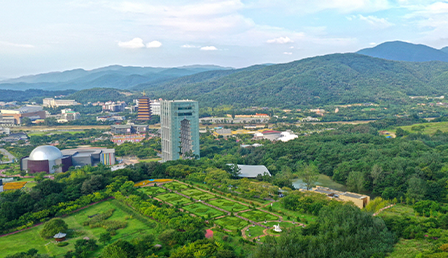 Highlighted the scenic views of the Gyeongju EXPO Grand Park.
Highlighted the scenic views of the Gyeongju EXPO Grand Park.
- The Gyeongju EXPO Grand Park offered spacious outdoor areas and experience-based content rooted in Silla history and culture.
- The Bomun Tourist Complex was reintroduced as a contact-free summer destination and a family travel hotspot.
- The Gyeongju EXPO Grand Park attracted 370,000 visitors by offering seasonal, specialized content.
- Hosted a contact-free Lunar New Year event at the Bomun Tourist Complex.

Recent and Future Developments (From 2021)
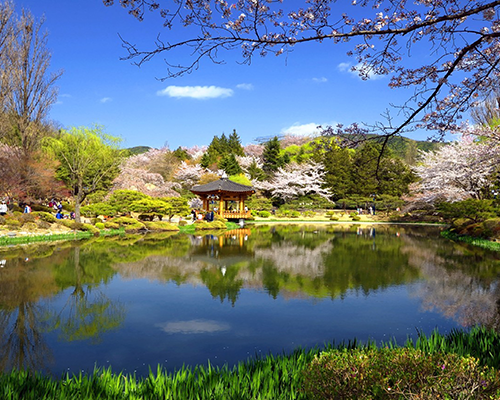 Visualization of Bomun Pavilion landscapes
Visualization of Bomun Pavilion landscapes
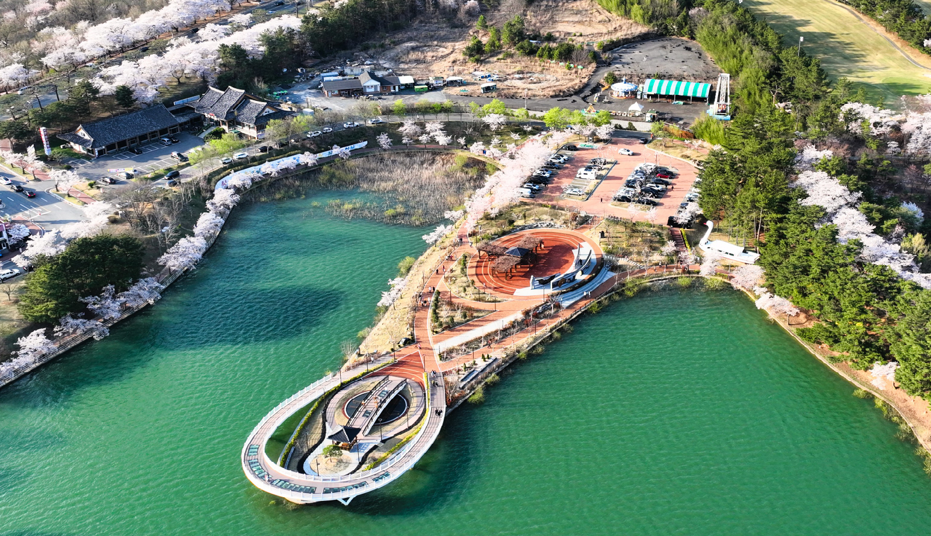 symbolic zipline tower,
symbolic zipline tower,
and conceptual designs for the Tourism History Park
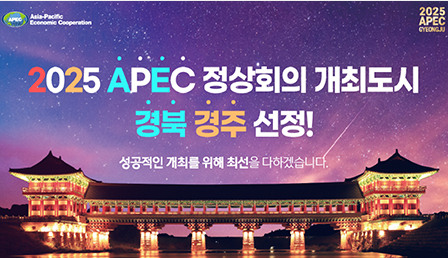 Ongoing efforts to host the 32nd APEC Summit in 2025.
Ongoing efforts to host the 32nd APEC Summit in 2025.
- Creation of a Metaverse World Map of the Bomun Tourist Complex on ZEPETO.
- Completion of renovations for the Bomun Water Stage.
- Installation of scenic lighting (media façade) for the Bomun Mulneoul Bridge.
- Collaboration with Jeju Art Park for the exhibition of artistic sculptures through 2026.
- Completion of the Tourism History Park in 2023.
- Ongoing efforts to host the 32nd APEC Summit in 2025.


and conceptual designs for the Tourism History Park

History Wall 3
Silla Ancient Capital(新羅古都)
- The Silla Ancient Capital redevelopment is guided by the following aesthetic values
- Grandeur (雄大), Brilliance (燦爛), Sophistication (精巧), Boldness (豁達), Initiative (進取), Serenity (餘裕), Elegance (優雅), and Mystique (幽玄).
The core of the Gyeongju Tourism Comprehensive Development Project is
'International Cultural Tourism City, Gyeongju'
Gyeongju Tourism Comprehensive Development Plan.
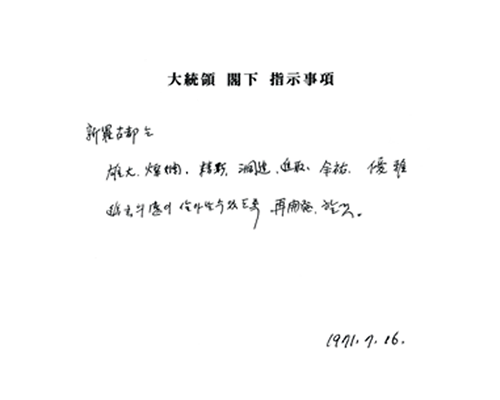
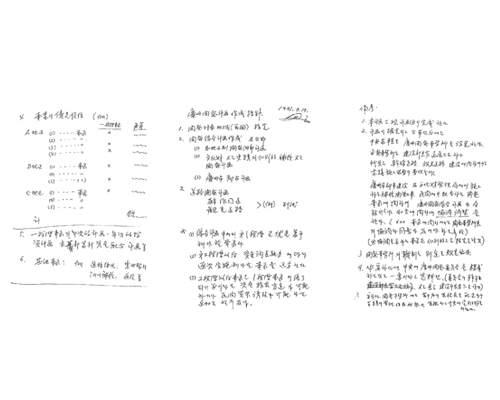
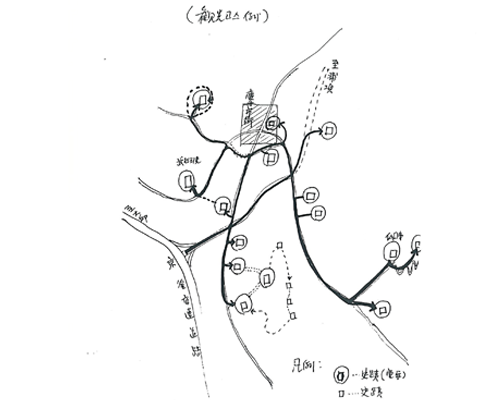
'International Cultural Tourism City, Gyeongju'
- This is a handwritten directive by the late President Park Chung-hee, issued to Jeong So-young (then Chief Economic Secretary at the Blue House) to provide guidance on the direction of the project. It is printed on the first page of the Gyeongju Tourism Comprehensive Development Plan published by the Ministry of Construction in November 1971. President Park personally drafted the Development Plan Guidelines for Gyeongju, providing instructions on development target areas, restoration of cultural heritage and historic sites,
urban planning for Gyeongju, and road development plans. The key objective of the Gyeongju Tourism Comprehensive Development Project was to transform Gyeongju into an international cultural tourism city.
Gyeongju Tourism Comprehensive Development Plan.



History Wall 4
President Park Chung-hee, handwritten title
 President Park Chung-hee, handwritten title
President Park Chung-hee, handwritten title
- "For my life, for my country and for my people"

현재 페이지에서 제공하는 정보와 편의성에 대하여 만족하시나요?





